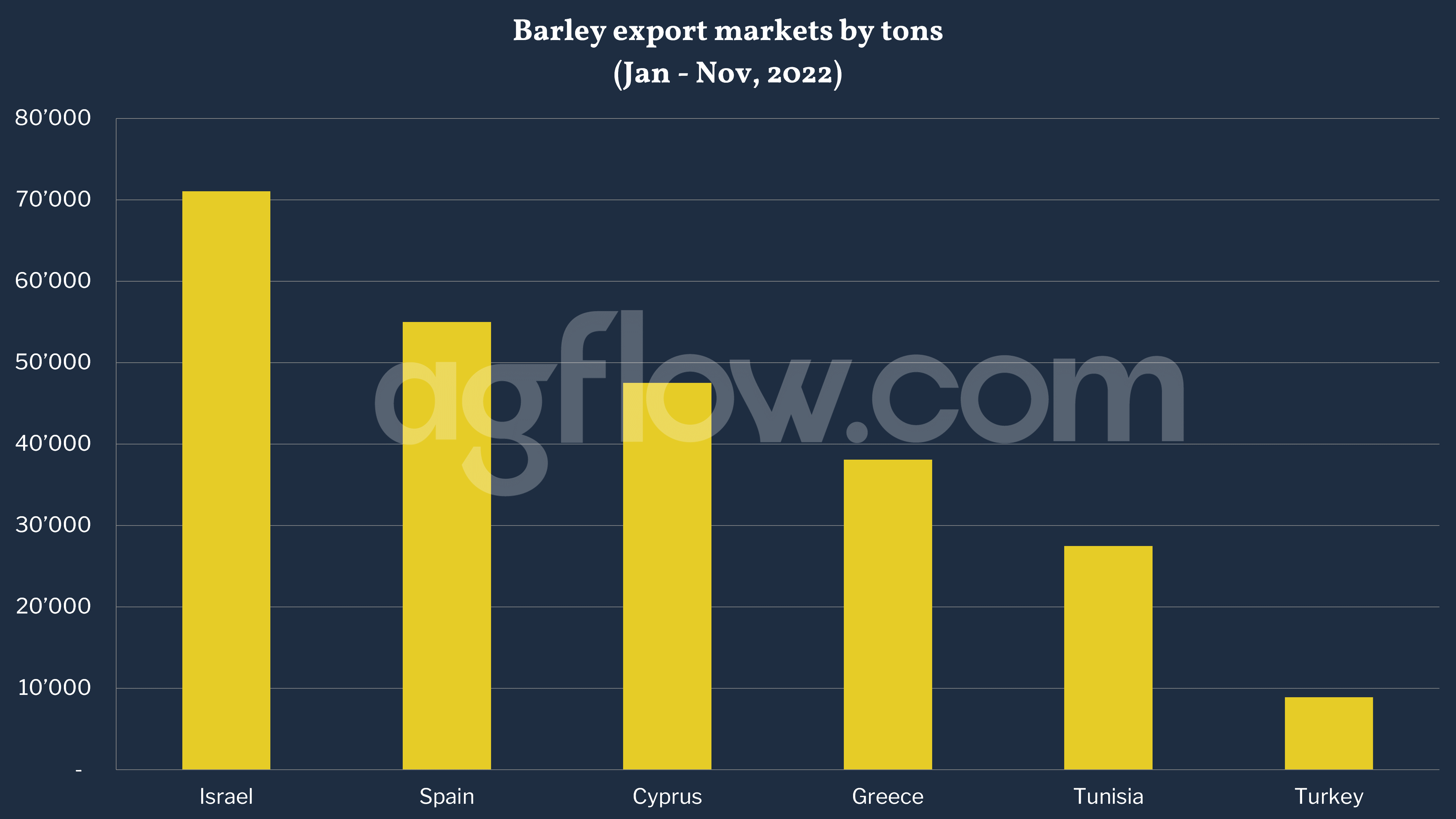Bulgarian Barley Export Focuses on the Mediterranean
Reading time: 2 minute
Bulgaria is one of the vital agricultural producers in the Black sea region. Barley is one of the most important field crops in Bulgaria, providing fodder for animals and raw material for breweries. Throughout the entire 20th century, the development of this crop was relatively stable in most years. Productivity was highest between 1955 and 1995, but later a drop was observed due to changes in land cultivation. Danubian Plain, bordering Romania in the northern regions of Montana, Lovech, Razgrad, and Varna are areas that mainly produce Barley.
There are thirteen breweries in Bulgaria, four of which are owned by Molson Coors, two by Carlsberg, and two by Heineken. Local breweries include Bolyarka, which makes a range of lagers, and distributes the Warsteiner brand in Bulgaria. Today, Bulgaria ranks 15th by beer consumption per capita in the world, with 73 liters a year.
Even though farmers tried to increase the area for Barley due to attractive dry conditions during fall, planting created some delays. However, winter was mild and continued with sufficient precipitation. During winter, most rain snow in January and February, and Early March bit was warmer and drier than usual, followed by rain in mid-March, preventing early spring planting in southern Bulgaria. Due to this dry weather and fall drought, winter Barley declined by five percent to 115,000 hectares. Also, Barley consumption for brewing declined (estimated at 55,000 MT) because of closed food service industry outlets and weaker tourism.
Barley stocks at the end of February were reported at 111,000 MT, three percent lower than a year ago, and it is regaining slowly. Average yields for winter and spring Barley are forecast to increase over the previous MY and vary from 4.4 MT/HA to 4.6 MT/HA, with production estimates from 530,000 MT to 590,000 MT.
The USDA forecasted drought and pest infestation will lead to a reduction in the Grain harvest in Bulgaria by 10-13% in the marketing year of 2022/2023 compared to 2021-2022. Barley production is forecast to be 640 thousand tons. Also, one thing farmers are concerning is rising production costs. Especially, fertilizer prices rose significantly, followed by energy, crop protection chemicals, and seeds.
Bulgarian Grain Trade
Regarding export, Bulgaria has become a bridge for the cargo flows between Europe, Russia, Ukraine, the Caucasus, Central Asia, and the Middle and Far East. Port Balchik and Varna Bay are the two main ports handling Grain exports from Bulgaria. Port Balchik is the sea gate of Dobrudzha, one of the biggest productive regions for Grain in Bulgaria. Therefore, the country is also affected by the war situation.
Ukraine’s Grain released to the market started to pass through Bulgaria, most of which remained in Bulgaria because of its low price. Farmers are, of course, upset and Iliya Prodanov, Deputy Chairman of the Association of Grain Producers of Bulgaria revealed that 2 million tons of last year’s wheat are still stored in warehouses. The new harvest, although smaller than last year, is estimated at 6 million tons. This is three times more than domestic consumption. Therefore, the Ministry of Agriculture needs to take caution and protect domestic manufacturers and stop illegal imports.
The main buyers of Bulgaria’s Barley are Spain, Israel, Libya, Greece, and Cyprus. According to Agflow data, Bulgaria shipped 70,060 MT of Barley to Israel in Jan-Nov 2022, followed by Spain (55,000 MT), Cyprus (47,550 MT), Greece (38,200 MT), and Tunisia (27,500 MT). Other minor importers were Turkey (8,900 MT), Libya (7,000 MT), Portugal (6,042 MT), and 3,000 (MT).
Other sources: USDA
Try AgFlow Free
Access Free On Updates for Corn, Wheat, Soybean,
Barley, and Sunflower Oil.
No Credit Card Required & Unlimited Access In Time


